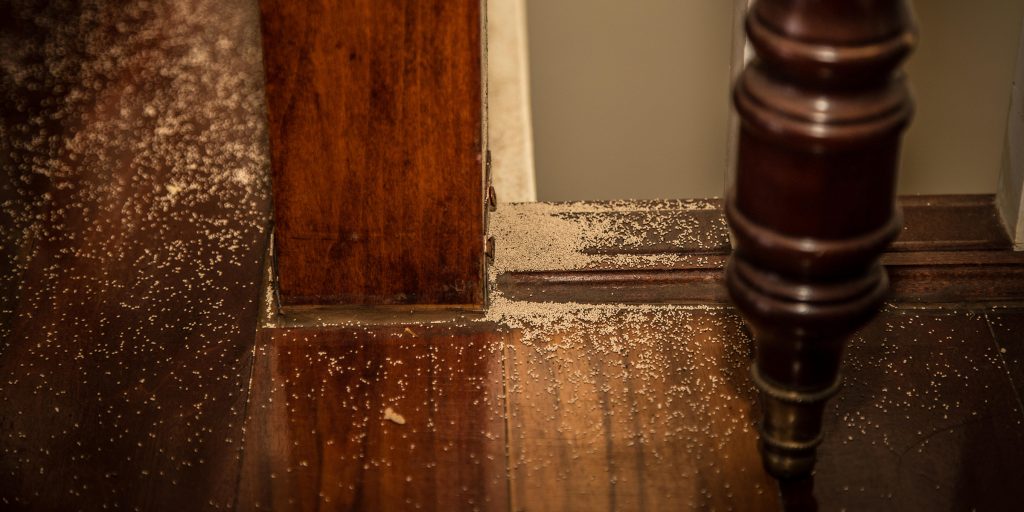Termites are one of the most destructive pests in the world. They can cause extensive damage to furniture, homes, and other structures. While termites can be difficult to eliminate, there are steps that you can take to protect your home from them. In this article, we’ll discuss how to identify termites, how to prevent and control infestations, and how to protect your furniture from termite damage.
Types of Termites

Subterranean Termites: Subterranean termites live in underground colonies and build mud tunnels to reach food sources. They are the most destructive species, as they can quickly eat through wood, flooring and even wallpaper.
Drywood Termites: Drywood termites live in dry wood and don’t need contact with the soil for sustenance. They can live inside homes for years without being detected, and are most likely to be found in furniture or other wood products.
Formosan Termites: Formosan termites are an aggressive species that is native to China, Taiwan and Japan. They are known for their large colonies and can cause extensive damage to homes and furniture.
Conehead Termites: Conehead termites are a relatively new species of termite that have recently spread to the United States. They are known for their large heads and antennae, and they can cause damage to furniture.
Dampwood Termites: Dampwood termites are found in wet, decaying wood and are most commonly found in stumps, logs and other damp areas. They are not as destructive as other species, but can still cause damage to furniture.
Signs of Termites in Furniture
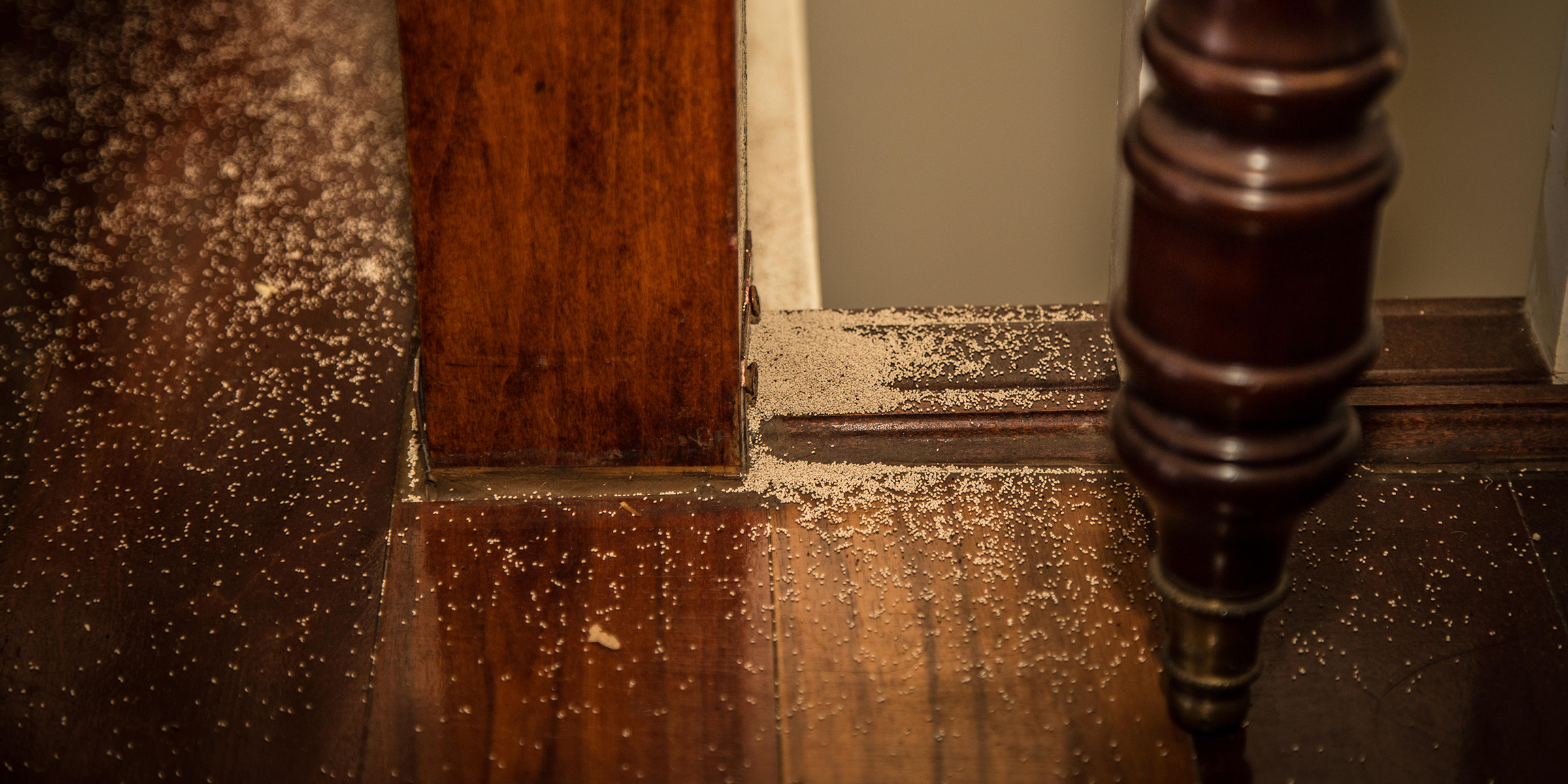
- Wooden furniture that is soft or hollow when tapped
- Small holes in the wood
- Discarded wings near windowsills and doors
- Mud tubes on walls, floors, and furniture
- Small piles of sawdust near wooden furniture
- Discoloration of wood, paint, or wallpaper
- A musty smell coming from furniture
Preventing Termites in Furniture

- Check furniture for signs of termite activity before bringing it indoors. Common signs include: holes, sawdust, discarded wings, or mud tubes.
- Keep wood furniture away from areas where termites are likely to be present, such as near exterior walls, windows, and doorways.
- Store wood furniture indoors in an area with low humidity and away from sources of moisture.
- Repair or replace any damaged or rotten wood in furniture.
- Use termite-resistant wood, such as cedar or redwood, for new furniture.
- Treat wood furniture with an insecticide or a termite repellent.
- Keep wooden furniture off the ground and away from damp surfaces.
- Vacuum furniture regularly to remove food debris, dust, and other debris that may attract termites.
- Inspect furniture for termite activity on a regular basis.
Treating a Single Piece of Furniture for Termites
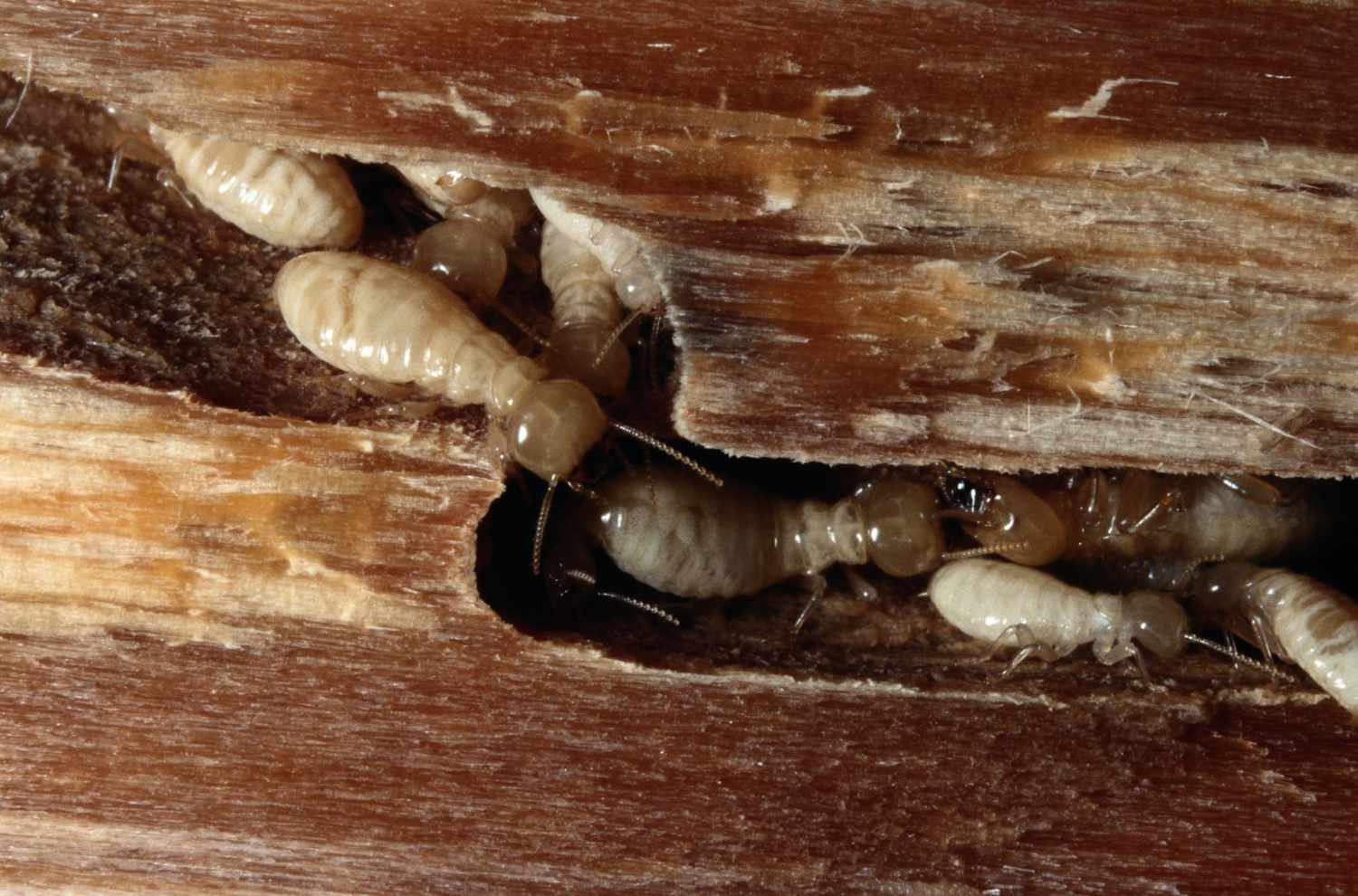
- Identify whether the furniture is infested with termites.
- Remove the furniture from the premises and vacuum the area thoroughly.
- Inspect the furniture for any visible signs of termites, such as mud tubes, wood shavings, or wings.
- If termites are present, treat the furniture with a wood-boring insecticide.
- Apply the insecticide in multiple areas of the furniture, including the crevices and any visible signs of termite activity.
- Allow the insecticide to dry before reassembling or placing the furniture back into the home.
- Once the furniture is dry, inspect it again for any remaining signs of termite activity.
- If needed, repeat the treatment.
Killing Termites in Furniture
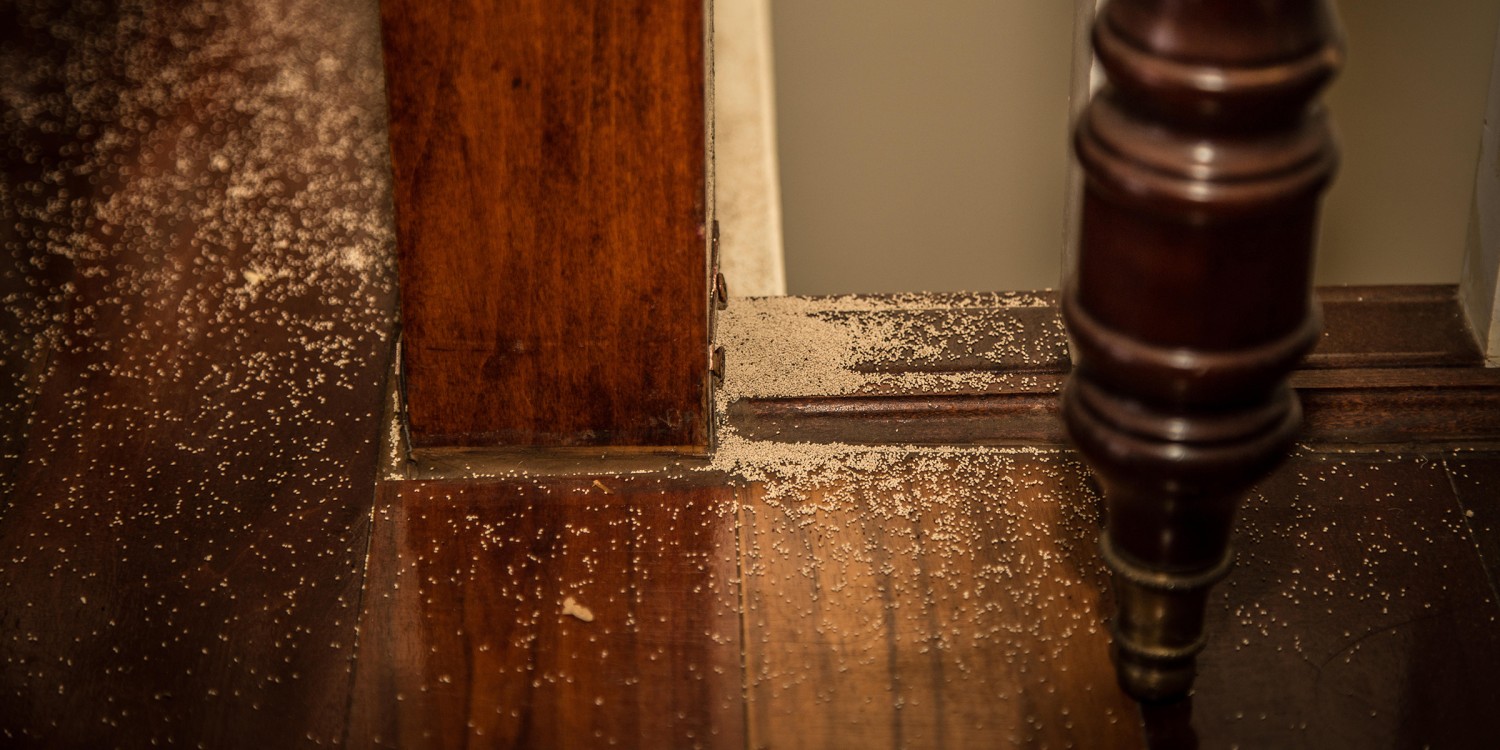
Termites can cause serious damage to furniture, and it is important to take steps to prevent them from invading or to kill them if they have already made their way into your furniture. The first step is to identify the type of termite present. Drywood termites are typically found in furniture made of hardwoods, while subterranean termites are usually found in furniture made of softwoods.
Once the type of termite has been determined, steps can be taken to kill them. If the infestation is localized, one option is to inject a liquid termiticide into the affected area. This termiticide will kill the termites and their eggs.
Another option is to place a baiting system in or around the furniture. This baiting system is placed so that the termites will be attracted to it and consume the bait, which will kill them.
If the infestation is more widespread, it is important to contact a professional exterminator. The exterminator will be able to assess the severity of the infestation and recommend the best treatment options, such as fumigation or insecticide sprays.
Finally, it is important to take steps to prevent termites from invading in the future. This can include keeping wood furniture away from moisture, sealing cracks and crevices in the furniture, and removing any wood debris from around the furniture. Taking these steps can help to ensure that termites do not become a problem again in the future.
Do Termites Eat Furniture?
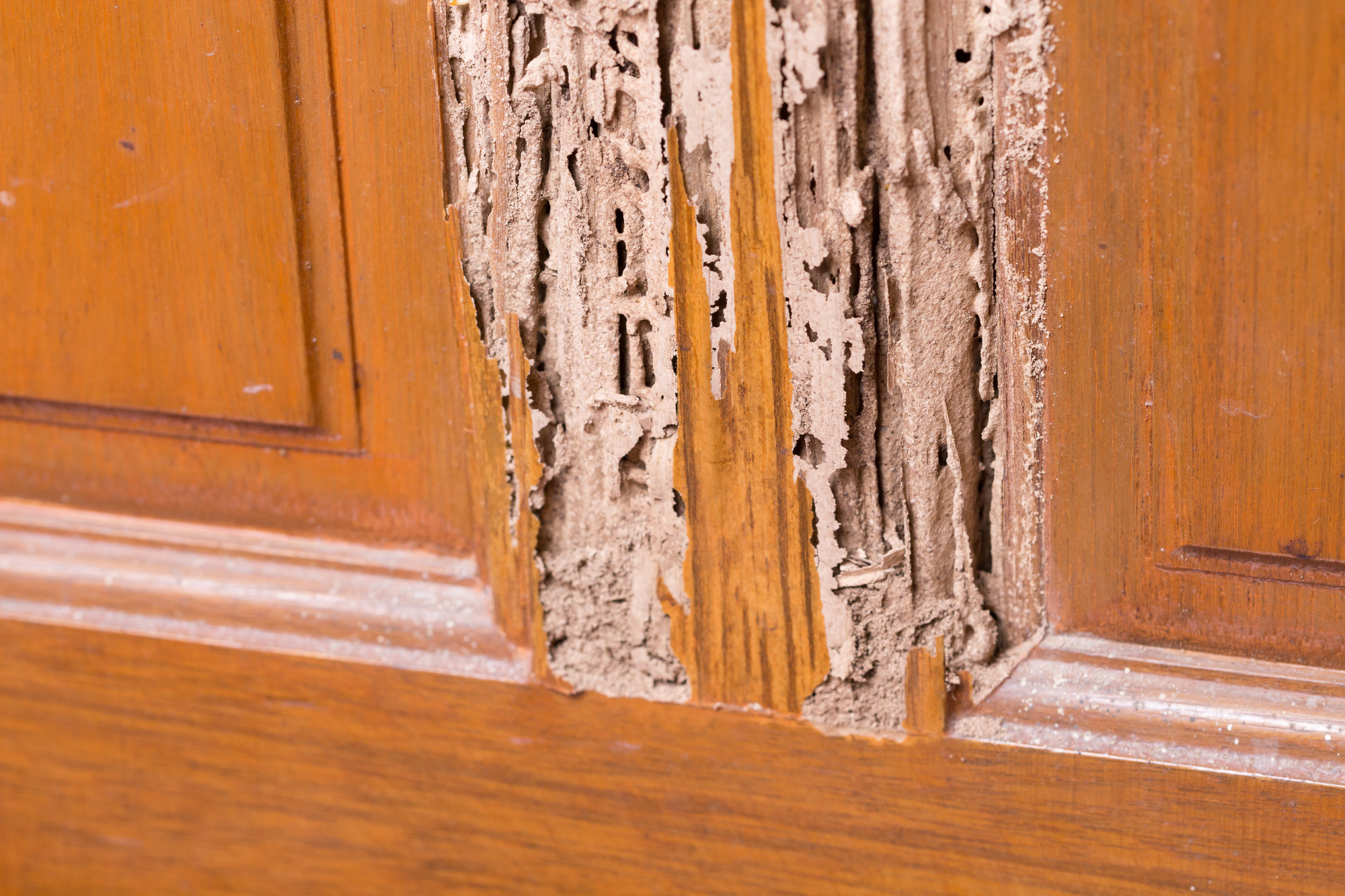
Yes, termites eat furniture. Termites can cause severe damage to wooden furniture, as they feed on cellulose found in wood and wood-based products. They can even cause structural damage to houses and other buildings. Furniture made from wood, particle board, or other cellulose-containing materials are all at risk of termite damage.
| Type of Furniture | Termite Risk |
|---|---|
| Solid Wood | High |
| Particle Board | High |
| Plywood | High |
| Veneer | High |
| Metal | Low |
| Leather | Low |
| Plastic | Low |
Furniture made from metal, leather, or plastic is not at risk from termite damage. However, if these materials are attached to wood, they are still at risk. The termites may not eat the metal, leather, or plastic, but they can still cause damage as they tunnel through the wood.
It is important to inspect furniture regularly for signs of termite damage, including sawdust, holes, or damaged surfaces. If termite damage is found, it is important to call a professional to assess the extent of the damage and to recommend a treatment plan.
Termites in Antique Furniture
- Termites are the biggest threat to antique furniture.
- They feed on cellulose material that can be found in furniture such as wood, paper, and fabrics.
- Termites can cause extensive damage to furniture, leaving it weakened and prone to further deterioration.
- Inspecting antique furniture for signs of termites is important, as they can cause irreversible damage if left unchecked.
- Signs of termite damage include hollowed out wood, crumbling wood, and sawdust-like frass.
- If termite damage is suspected, furniture should be treated by a pest control professional.
- Preventative measures such as storing furniture in a dry environment and using wood finishes containing borate can help keep termites away.
Protecting Wood Furniture from Termites
- Inspect furniture for signs of termite infestation, such as wings, piles of sawdust, and mud tubes.
- Keep wood furniture away from moisture sources, like leaky pipes or windows.
- Clean wood furniture with a damp cloth and mild detergent regularly.
- Apply a sealant to wood furniture to prevent moisture from entering the wood.
- Avoid attracting termites in the first place by removing wood piles, wood debris and other organic material from around your home.
- Store wood furniture in a dry area, such as a basement or garage.
- Check for signs of termite infestation regularly, especially after heavy rains or flooding.
- Treat infested furniture with insecticides.
- Replace damaged furniture as soon as possible.
Frequently Asked Questions
How to get rid of Termites in Furniture?
Termites in furniture can be difficult to get rid of. The best way to eliminate them is to use a combination of chemical and physical control methods. Chemical treatments involve insecticides that are applied directly to the infested furniture and surrounding areas. Physical control methods include preventing moisture build-up, cleaning and vacuuming, and replacing infested wood. To prevent a reoccurrence of the infestation, it is important to regularly inspect furniture for signs of termite activity and make necessary repairs.
How to treat a single piece of furniture for termites?
To treat a single piece of furniture for termites, start by inspecting the furniture for evidence of termite activity and damage. If any termite activity is found, remove all infested wooden parts, including drawers and shelves. Treat the remaining parts of the furniture with a termite control product according to the manufacturer’s instructions. If the furniture is made of untreated wood, use a borate-based product to kill the termites. If it is made of painted or varnished wood, use an insecticide. Once the product is dry, reassemble the furniture and seal any exposed wood with a sealant.
How to kill termites in furniture?
The best way to kill termites in furniture is to use a combination of insecticides and natural remedies. Insecticides such as boric acid, foam sprays and dust can be used to treat wood infested with termites. Natural remedies such as neem oil, orange oil and cedar oil can also be used to repel and kill termites. Make sure to follow the instructions listed on the insecticide’s label and wear protective clothing when applying the treatment. After applying the insecticides, use a vacuum to clean up any remaining debris.
Do Termites Eat Furniture?
Yes, termites feed mainly on wood, but they can also damage paper, books, insulation, and even swimming pool liners and filtration systems. They can cause serious structural damage to buildings, compromising their structural integrity and causing costly repairs. Subterranean termites can build nests in the soil and tunnel their way up into buildings and furniture. Drywood termites require no contact with the soil and can survive in dry, undecayed wood. They are able to consume wood, furniture, and other items in and around the home.
What Should I Know About Termites in Antique Furniture?
Termites are a common problem in antique furniture, as wood is their main source of food. To prevent termites from damaging antique furniture, it is important to inspect it regularly for signs of infestation. Signs of infestation include the presence of discarded wings, small holes in the wood, and sawdust. If the furniture is infested, it is important to hire a professional to treat the problem as soon as possible. Additionally, it is important to store antique furniture in dry and well-ventilated areas to reduce the risk of infestation.
Conclusion
Termites can cause costly damage to your furniture. Taking preventive measures, such as using pest control sprays, baiting systems, and using termite-resistant woods, can help protect your furniture from termite infestations. Inspecting for signs of damage regularly and calling a pest control company if any signs of termites are present can also keep your furniture safe from the devastating effects of an infestation.

